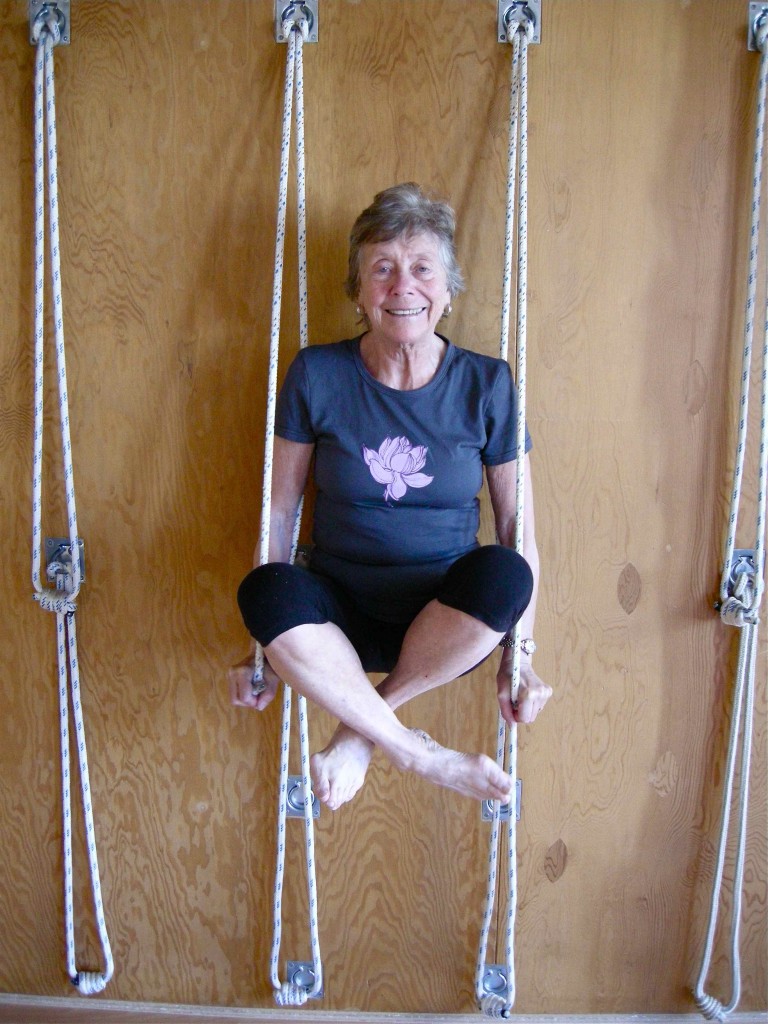The Five-Minute Yoga Challenge started as a response to two of Gretchen Rubin’s Rules for Adulthood: “What you do EVERY DAY matters more than what you do ONCE IN A WHILE,” and “By doing a little bit each day, you can get a lot accomplished.” That, in a nutshell, is the philosophy of My Five Minute Yoga Practice. If you have time, of course you can practice other poses. But if five minutes a day is all you have, choose a Five-Minute Yoga Challenge that works for you, do it, and see what happens.
Core strength: we all want it.
But there’s no point in developing core strength without core awareness. And if you doubt that can happen, you’ve never met anyone pulled into a permanent crunch by over-zealous abs work.
Time to call out the super-powers of metaphor, in particular, the fabulously useful, completely imaginary bungee cords.
They can stretch. They can hold. And once you feel them at work, you’ll have a much better chance of keeping your core engaged and your lower back protected in any yoga pose you do.
The bungee cords in question attach to the bottom of your ribcage, on the right and left sides, and the top of your pelvis, also on the right and left sides.
Put your thumbs on the bottom of your ribcage and reach for your pelvis with your middle fingers. Squeeze those two spots toward each other, release your hands and notice: to keep them working towards each other, you have to work your core, specifically the deep abdominal muscles.

Pause here, connect your bottom ribs to the top of your pelvis
Ready for a fuller exploration?
Lie down on your mat, knees bent, feet hip distance apart and slightly pigeon-toed.
Lift your buttocks two inches from the floor, and curl your tailbone up towards your pubic bone. Keeping the curl as you bring your pelvis back to the floor.
Feel your back waist settled softly on the floor. Draw your shoulder blades down your back. Lengthen the back of your neck. Soften your face.
Notice that when you inhale, your back waist lifts slightly from the floor. As you exhale, press your navel toward your spine.
Take your thumbs to the bottom of your ribcage and your fingertips to the top of your pelvis. Squeeze the fingers and thumbs closer together. This connection is your imaginary, but very useful, bungee cord.
Now grasp your elbows in the palms of your hands. Inhale and lift your forearms to the ceiling. Exhale, press your navel to your spine, and, keeping your ribcage still, begin to lower your arms behind your head.
Continue to move the bottom of your ribcage toward the top of your pelvis. Keep pressing your back waist into the floor.
Stretch out through your upper arms as you lower your arms toward the floor.
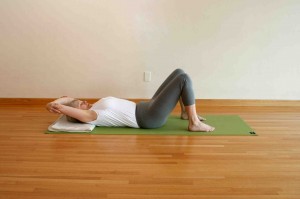
Take your arms overhead, keeping your ribcage completely still
If your arms easily reach the floor, lift them up an inch and continue to draw your forearms away from your head.
Hold for two or three breath cycles, stretching your forearms away as you inhale, pressing your back waist to the floor and moving your ribcage toward your pelvis as you exhale.
On an inhalation, lift your arms back toward the ceiling. Release your arms, relax for a moment, change your clasp and repeat.
(The easiest way to find your non-habitual clasp is to clasp your elbows without thinking, and then move the opposite arm on top.)
Now try keeping your bungee cord intact with your arms straight. First lift them up, palms spread wide, elbows firm, fingers to the ceiling. Keeping your arms shoulder width apart, slowly take them overhead until your thumbs touch the floor. Extend through your arms toward your fingers and keep your ribcage moving toward the front of your pelvis. If you have a yoga handmaiden nearby, ask for some feedback on whether or not your arms stayed shoulder-width apart. You may be surprised at what shoulder-width feels like.
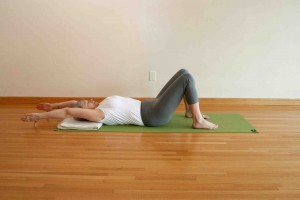
Keep your arms working and your hands shoulder-width apart
Benefits: Your bungee cord is the energy connection between the bottom of your rib cage and the top of your pelvis. No matter what pose you do, those two points stay connected with each other, keeping the lower back long and preventing back injury. Keeping them connected strengthens your deep abdominal muscles.
Sequence: Working with the bungee cord is an excellent way to spend a five-minute yoga practice. Try it on the floor, then stand in Tadasana, grasp your elbows and slowly lift your arms keeping your ribs stable. Yes, it’s harder.
At the beginning of a longer practice session, use this preparation to remind yourself of the bungee cord, and to warm up your shoulders.
Ouch: If your head drops back, and the back of your neck shortens, put a block or blanket under head. If your shoulders are tight, place a stack of foam blocks or other height behind your head. Rest your forearms on the blocks at a height that gives you an intense and yet pleasant stretch. Continue to extend through your upper arms. On your exhalations, breathe out through your armpits.
Photo: Beige Alert, Michael Pereckas
If you liked this post, you might also like:
10 Tips for Building a Home Yoga Practice
Five-Minute Yoga Challeng: Twist in a Chair to Free Your Back

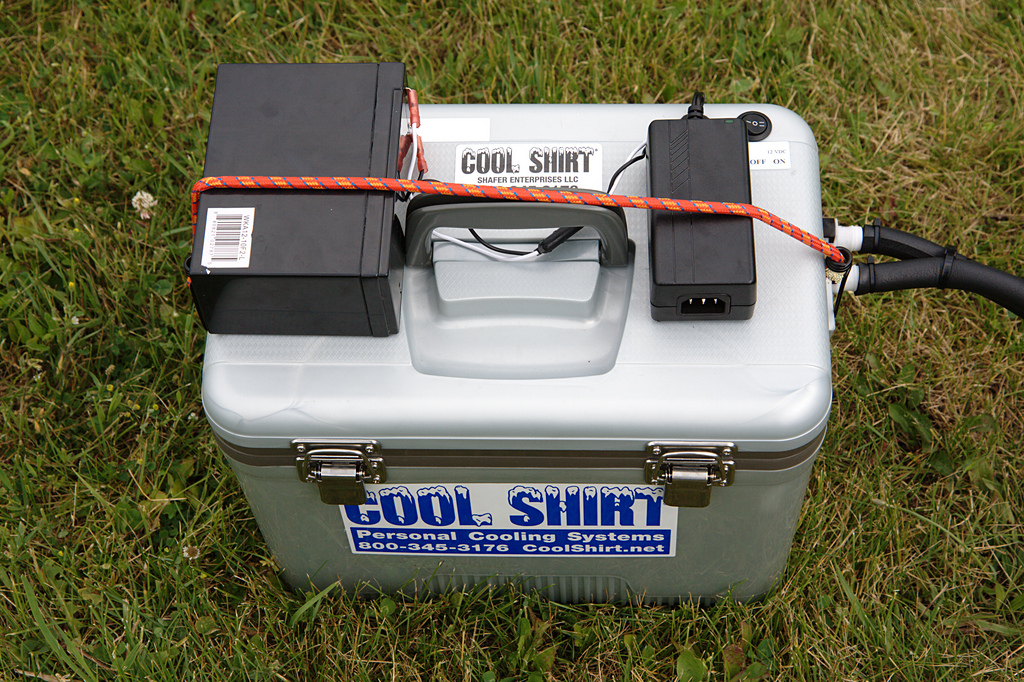

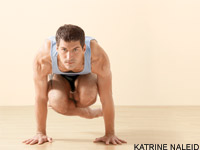

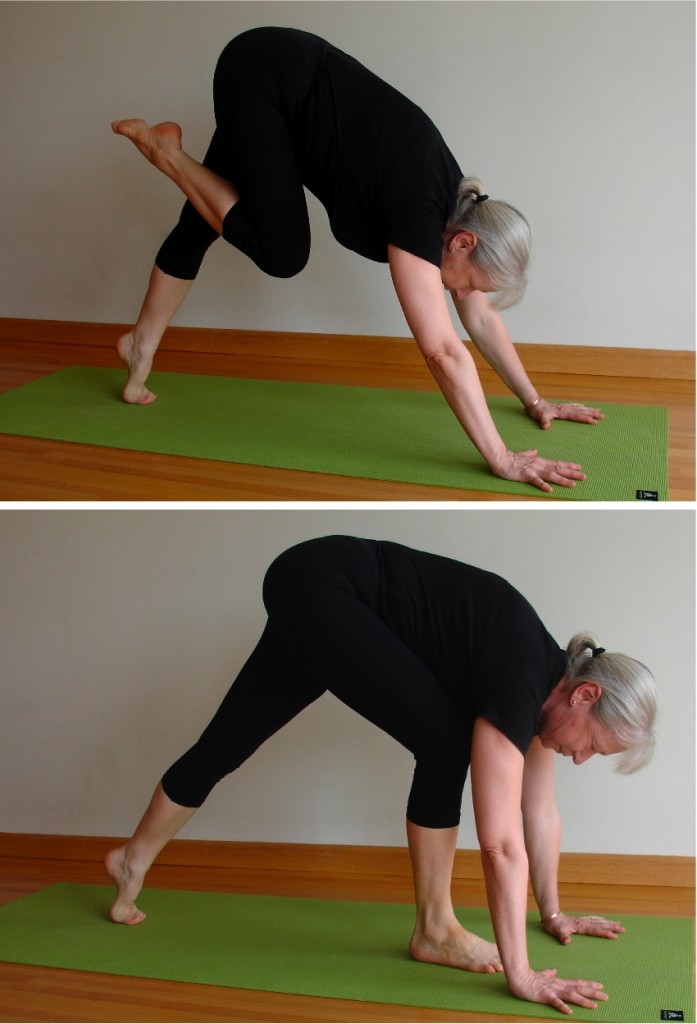
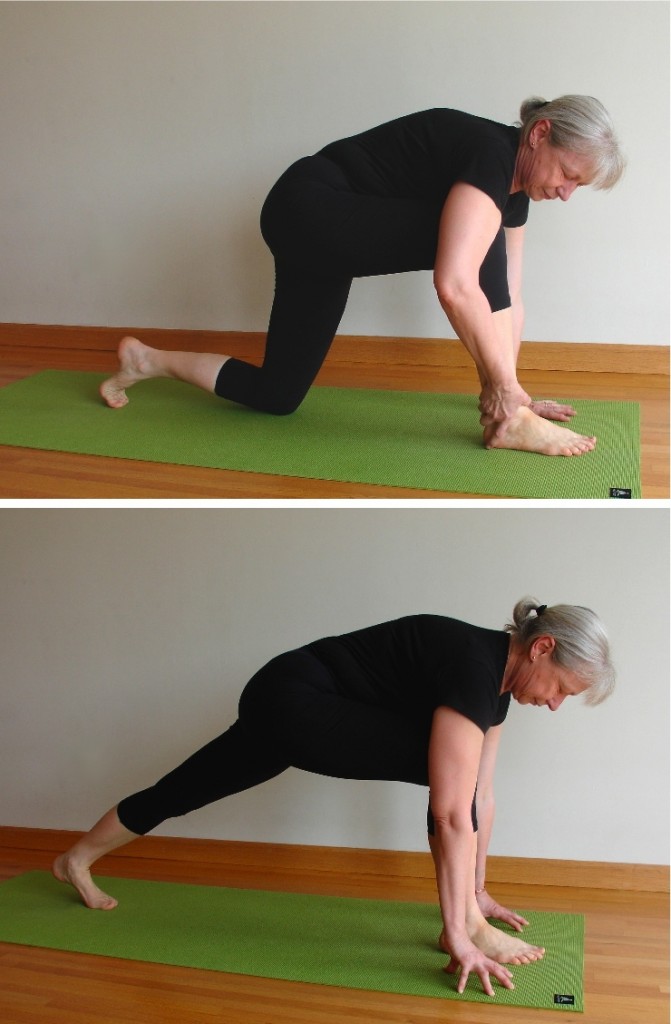

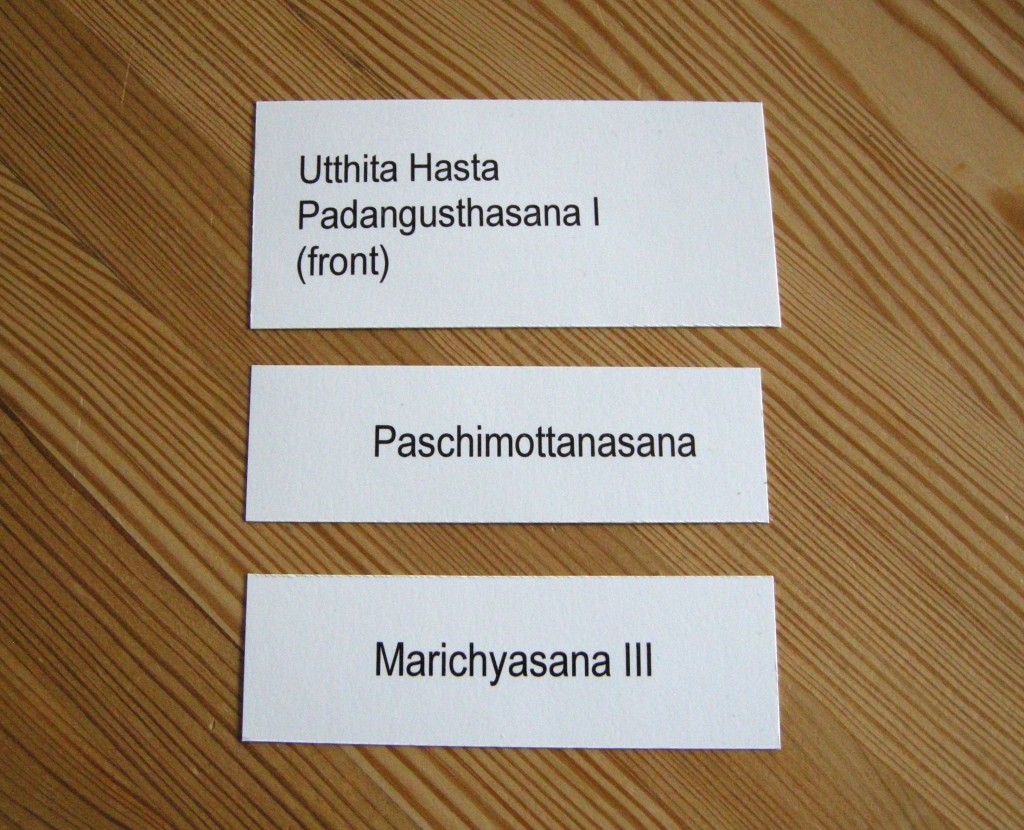

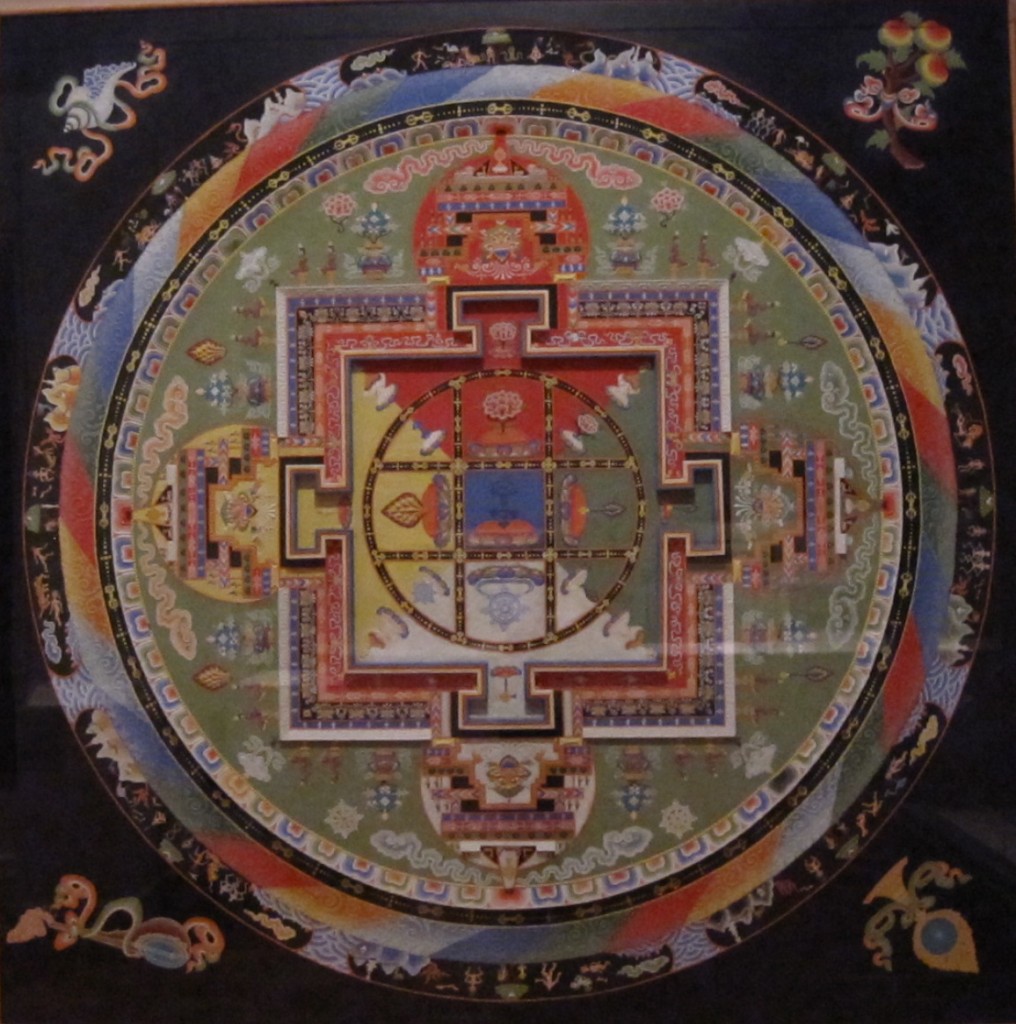
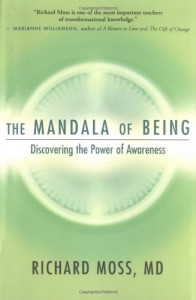 I learned this technique from
I learned this technique from 


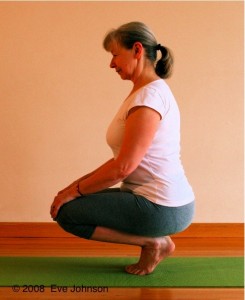
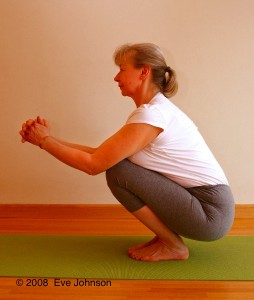
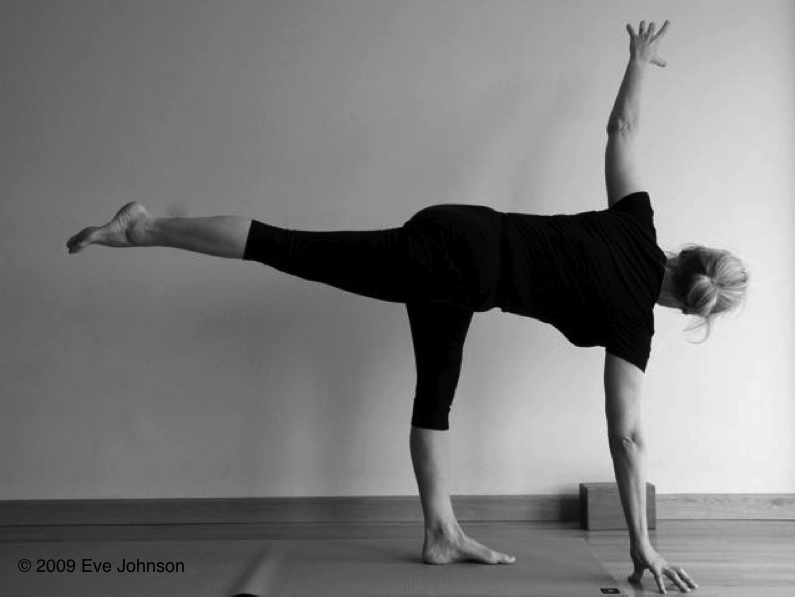


 But this summer I read Mark Singleton’s book Yoga Body: The Origins of Modern Posture Practice, and now I have no such illusions.
But this summer I read Mark Singleton’s book Yoga Body: The Origins of Modern Posture Practice, and now I have no such illusions.
